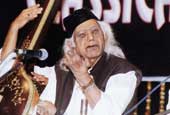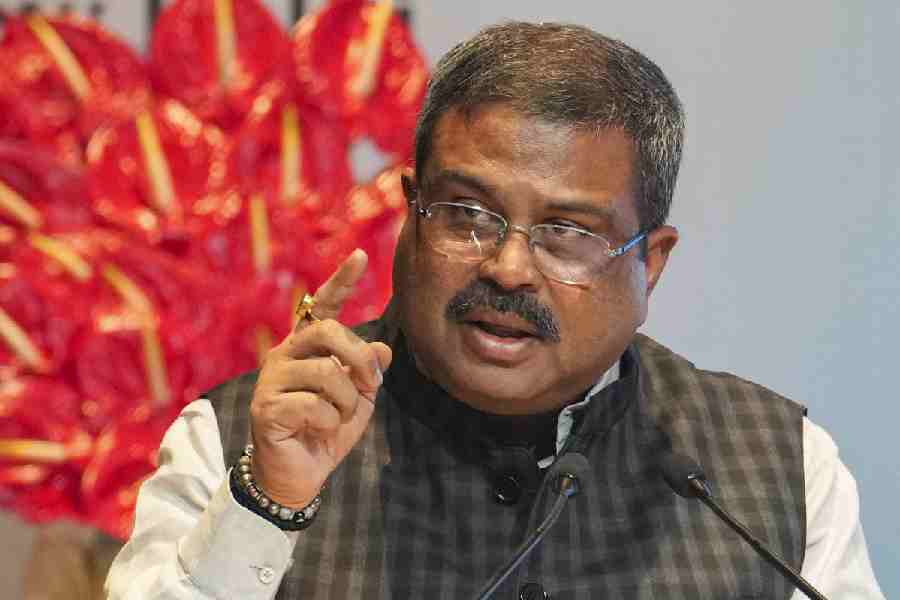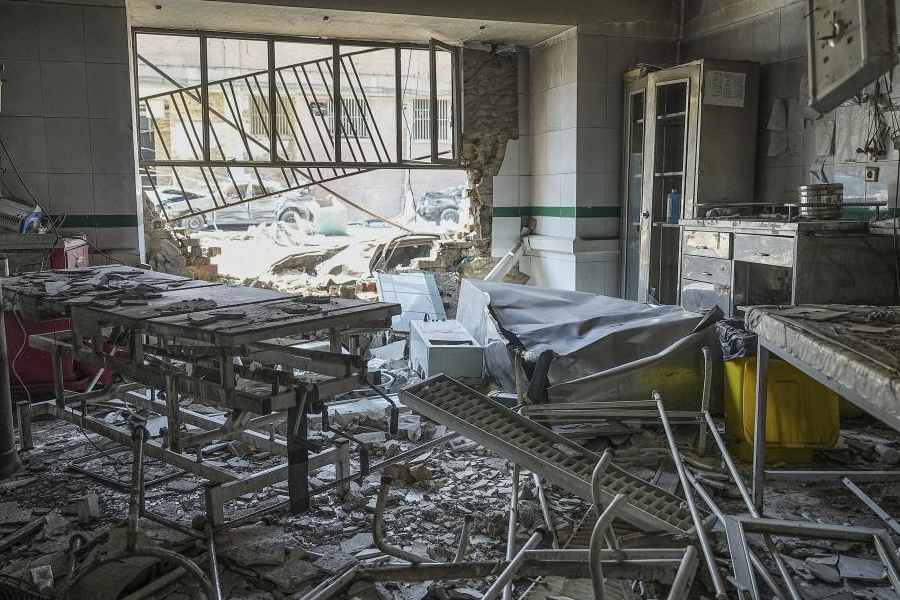 |
Ustad Abdul Rashid Khan, who is well into his mid-90s, sang with a voice that seemed at the most 50 years old, at the Bandish Baithak presented by Sangeet Ashram at G.D. Birla Sabhagar on March 3. Representing a tradition slightly removed from contemporary practices, he at times used unusual phrases in ragas. Since he did not bother to name the ragas in which he sang 14 compositions as the final artiste of the programme, it was not possible to identify all the ragas with certainty.
Bowling over the audience with his powerful voice and vigorous style, the maestro started with traditional compositions. First a Sadra in Tilak Kamod, then another in an uncertain raga of the Khammaj scale and then another in Gaud Malhar. Then came a composition in what sounded like Alahiya Bilawal at times but used the phrase Re Ga Ma Pa in the high part of the antara. He said this was a Mathha. As far as contemporary knowledge goes, Mathha is a defunct section of the 12 part alap originally played by Beenkars. He went on to sing what he called a Dharu in raga Shankara in pancham sawari tala (15 matras), an 11 matra Chhand in Desh and own compositions in Hammir (with Ga ma Ga, ma Pa, ma Pa Dha ni Dha Pa), Khammaj Bahar, Dhani, two confusing Malhars, a beautiful Sadra in Bhupali (also a drut teental tarana) and tarana in Jaijawanti. Samar Saha supported him gamely on the tabla.
The evening started with Purnima Sen’s petite presentation of mainly Agra Atrauli compositions in Lanka Dahan Sarang (without the Ali Akbar dhaivat), Lalita Gouri (Sadarang), Barwa (Faiyaz Khan), Saazgiri, Sawani Bihag (Mehboob Khan), Jait Kalyan (Vilayat Hussain), Nayaki Kanada (Ramzan Khan Rangilay) and Dhani (Sharafat Hussain). She let the classic compositions work their magic and held her own artistry on a tight leash. Then there was the octogenarian Pandit Ramashray Jha singing with relish compositions in Shri (madhya and drut teental, drut ada chowtal), Nata Nagari (drut teental), Yaman (drut teental, drut ektal) and Nat Kamod (drut teental). Though definitely impressive, Jha tended to talk a little too much at times. Sabir Khan provided expert tabla accompaniment.
On the previous evening, the Ramakrishna Mission Institute of Culture presented sitar player Partha Bose with Pandit Kishan Maharaj on the tabla at Vivekananda Hall. Bose, who is among those who have drawn inspiration from the late Nikhil Banerjee’s sonorous style, played a well-structured alap in Shri. He, however, seemed ill at ease in the deep bass section and once struck the gandhar marginally offkey. The gatkari was vigorous and in dhamar tala with Kishan Maharaj playing pakhawaj-style patterns. The vilambit teental gatkari in Jaijawanti presented pleasant phrase development and competent mediumpace taankari. There were short taan tukdas and tihais in the drut teental gatkari. Some of these drew replies from Kishan Maharaj. In the faster portion Maharaj played saathsangat with sitar stroke rhythms and replied to the rapid bolkari. He was, however, rather clumsy in the jhala section and could not respond properly to the layakari variations Bose seemed to play especially for his participation.










